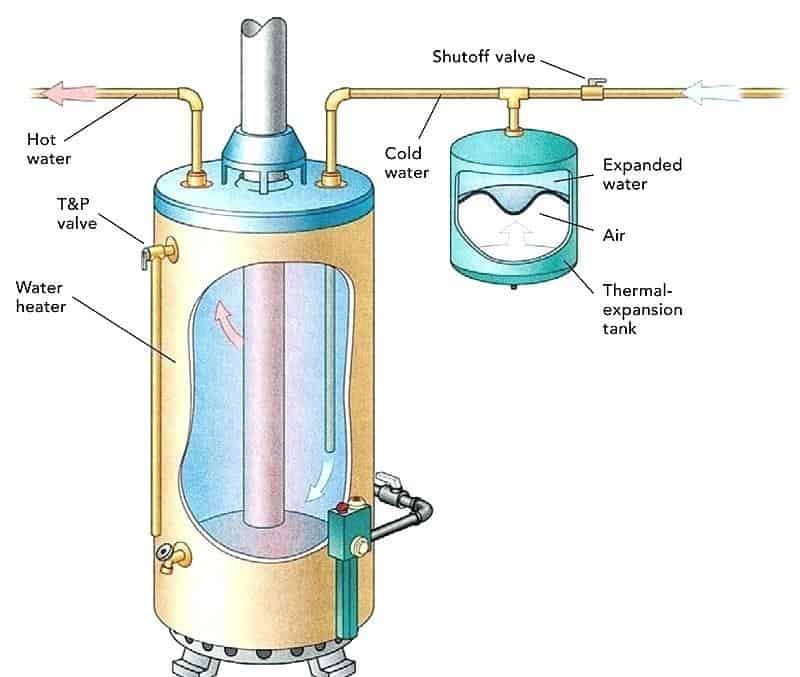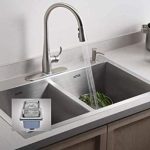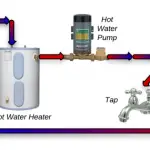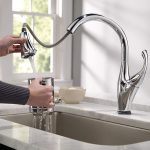Whether you need an expansion water tank for your water heater is largely dependent on the type of water heater you have. There are several other things you need to check out and those include the size of the expansion tank and the exact type of expansion tank you should go with.
Do You Really Need an Expansion Tank for a Water Heater?
An expansion tank is required if your plumbing system is closed i.e the block flow between the house and main water supply is blocked. Since there is no way for the pressure to go, it can put a lot of stress on your water heater and thus you end up needing an expansion tank for your water heater.
Is an Expansion Tank Required for a Water Heater?
If your water heater has a closed plumbing system, you will need an expansion tank. In essence, a home can have either a closed plumbing system or an open plumbing system. A closed plumbing system prevents the water from flowing in the reverse direction. That means the water will not flow back to the city lines. In the case of an open plumbing system, you will find no pressure or stress on the water heater. Such cases will not require an expansion tank.
Why do you need an expansion tank for a water heater in a closed plumbing system? Having an expansion tank will prevent damage to the water heater or even the plumbing system. A closed plumbing system creates a single path for the flow of water and when the water is heated, it gets its volume expanded due to thermal expansion. This can put extra pressure on the tank or plumbing system. Using an expansion tank reduces the pressure and thus you end up preventing the damage to the heater and plumbing.
Do note that in case you are using a tankless water heater, in such a scenario, you would not need to install an expansion tank for your water heater. Since there would be no pressure build-up in the water heater, the need for an expansion tank can be ruled out. However, make sure that there is no pressure build-up in any other section of your entire plumbing network.

How Does an Expansion Tank Work?
As stated before, when the water heater heats up the water, it begins expanding. This is referred to as Thermal Expansion. This extra pressure can be absorbed by the city lines when the plumbing system is open. But when the water line has a check valve or a non-return valve, the pressure build-up cannot be released.
This extra build-up of pressure stays trapped in the plumbing system that includes your water lines, taps, and of course, the water heater itself. That is where the expansion tank comes to the fore. It simply absorbs the pressure. Half of the tank is filled with water and the other half is filled with compressed air. The expansion tank also consists of a butyl rubber bladder.
Common Hot Water Heater Expansion Tank Problems
Now that you are aware of the expansion tank and the benefits offered by the concept, you would have decided to go with the installation of an expansion tank for your home. Before you move ahead to opt for the best expansion tank options for your needs, it should equally be important to focus on understanding the problems you would come across with the expansion tanks.
Some common water expansion tank problems you may come across would include:
Water Heater Expansion Tank Sizing
There are two prime factors that will decide the size of the expansion tank. You need to check the size of the water heater you may have. You can check out the information on the size of the water heater on the label on your water heater. You can also find the information in the instruction manual as well. The second factor you will need to check for determining the water heater expansion tank sizing is the water pressure in your plumbing system.
Each of the expansion tank manufacturers will provide you access to a calculator and chart for the recommended expansion tank size and model. Do note that there is no specific approach or universal size that would suit every usage pattern. If you are unable to decide on the exact size, it is always great to pick a size a little larger than picking the smaller one.
One additional factor you need to keep in mind is that you should install a pressure reducing valve in case your water pressure is above 80 psi. The correct water pressure that should be good enough for a trouble-free water heater should be between 50 to 60 psi.
The best guide that should help you get access to the optimum results in terms of Water heater expansion tank sizing can be got through the following table:
| Water Heater Capacity in Gallons | Water Pressure in PSI | Expansion Tank Size in Gallons |
| 40 to 60-gallon | 40-50 psi | 2-gallon |
| 40 to 60-gallon | 60-80 psi | 3.2-gallon |
| 80-gallon | 40 psi | 2-gallon |
| 80-gallon | 50-60 psi | 3.2-gallon |
| 80-gallon | 80 psi | 4.4-gallon |
If you do not get an expansion tank specified in this table, go for a larger tank than opting for a smaller one. It would be ideal to go with the next best size.
What Happens if you Choose the Wrong Size of the Expansion Tank?
Buying the exact right size of the expansion tank is quite desirable when picking the best expansion tank for your water heater. However, if you are in doubt, or if you cannot find the expansion tank of the size mentioned, it would be a good idea to err on the larger size than switching to a smaller one.
An expansion tank that is larger than what is needed can be able to safely handle the extra water just in case. However, smaller size of the expansion tank can further trigger a high temperature and pressure on your system.
What Would be the Water Heater Expansion Tank Installation Cost?
The cost for installing a water heater expansion tank would range across $ 145 to $ 350. In fact, the purchase cost for an expansion tank would begin at around $ 30 to $ 50 if you are going for a DIY expansion tank. The cost can go up to $ 350 for a professional expansion tank.
If you choose to hire a plumber or an installer in your region, you would perhaps need to pay around $ 250 to $ 270 for the installation. Assuming the cost of the expansion tank in itself can range from $ 50 to $150.
Are two water heaters more efficient than one?
The water heater ideally suffers standby losses. The standby losses can occur due to several reasons and a few of the reasons can be the surface area, the temperature differential, and quality/quantity of the insulation. From the standby loss point of view, opting for one bigger tank would be more practical.
No matter which water heater you pick, you will opt for heating only that much of water that you want to heat. That would mean having a bigger tank would not have much huge cost. But, looking at the standby losses, you would ideally find that you would have lower standby loss on one water heater when compared to the loss on two smaller water heaters.
I Have Two Water Heaters. Can I Turn One Off?
Whether you can turn off one of the water heaters would ideally be dependent on whether the water heaters are connected in series and parallel. While you can easily turn off one of the heaters, you need to check out a few parameters before turning of one of them.
FAQs Relating to Water Heater Expansion Tank
The Closing Thoughts
Well, if you do already have a normal storage tank that receives the water from the water heater, you already have an expansion tank that should work with your water heater. However, to make sure that the storage tank does work as an expansion tank, it would be advisable to ensure that the size of the expansion tank is adequate. This can be done by following and checking out the table featured above, or consulting a professional plumber.
Ensure that your water heater does need an expansion tank or not by going through the specific requirements explained above. If you do, follow the proper guidelines and install an appropriate expansion tank for your water heater.











Add Comment